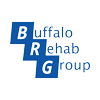3 At-Home Fall Risk Tests for Seniors You Can Try Today
As we age, it’s natural to feel a little less steady on our feet. But nearly 1 in 4 adults over 65 falls each year, often leading to injuries that impact confidence and independence.
The good news? Many falls are preventable—starting with awareness.
These at-home fall risk tests give you a simple way to check your balance, strength, and mobility from the comfort of home.
3 At-Home Fall Risk Tests You Can Try Today
Below are three quick, proven at-home fall risk tests you can try today to check your strength, balance, and mobility. If any of them feel difficult or cause concern, physical therapy may help you feel steadier and more confident.
1. Sit-to-Stand Test
-
- What it measures: Leg strength and control
- How to do it:
- Sit on a standard, sturdy chair without armrests.
- Cross your arms over your chest.
- Stand up and sit back down five times—as fast as you can safely.
- What to Aim For: Completing 5 sit-to-stands under 11 seconds is considered a healthy score for adults 60+. Longer time or using your arms may signal reduced lower body strength.
Learn more about how this test helps you assess your balance & mobility.
2. Timed Up and Go (TUG) Test
-
- What it measures: Balance, coordination, and gait
- How to do it:
- Sit in a chair with arms.
- Mark a spot 10 feet away.
- Stand up, walk to the mark, turn, walk back, and sit down.
- Time the whole sequence.
- What to Aim For: 12 seconds is typical. Anything above 12 seconds may indicate a higher risk of falling.
Assess your mobility with a fall risk test at home.
3. Balance Test (Single-Leg Stand)
-
- What it measures: Static balance and coordination
- How to do it:
- Stand near a counter for safety.
- Cross your arms.
- Lift one foot off the ground and hold for as long as you can (max 30 seconds).
- Repeat on both legs.
- What to Aim For: Adults over 60 should aim for 10 seconds or more on each leg. Needing to grab support quickly is a sign balance training may help.
Practice a simple balance progression at home.
What These Tests Can Tell You
These at-home fall risk tests give you an easy, accessible way to check in on your strength, balance, and coordination—all of which play a critical role in helping you stay independent as you age. While they’re not a replacement for a professional evaluation, these self-assessments can help you better understand your mobility and identify early signs of instability.
If one or more of these tests feel challenging, that’s okay. Everyone starts somewhere—and small changes in your strength or balance are common with age. What matters most is taking action before a fall happens. With guidance from a physical therapist, you can improve your results and reduce your risk with simple, targeted exercises.
What If I Don’t Perform Well?
If you feel unsteady or struggle with any of the tests, you’re not alone. Many adults over 55 experience changes in balance and strength. These changes are common—but not permanent.
At Buffalo Rehab Group, we use technology and personalized physical therapy to help you:
-
- Improve balance and stability
- Build strength and endurance
- Stay safe and active in your home and community
FAQ: Fall Risk & Self-Testing
Why should I try a fall risk test at home?
At-home fall risk tests offer a safe and simple way to check your balance and mobility between visits to your doctor or physical therapist.
How often should I repeat these tests?
Every 1–2 months, or sooner if you’ve had a recent fall or feel more unsteady than usual.
What should I do if I don’t 'pass' a test?
Consider reaching out to a physical therapist for a balance assessment and personalized plan.
Are these tests safe to do alone?
Yes—but always stand near a counter or sturdy support, especially during the balance test.
When should I see a doctor or PT?
If you’ve fallen in the past year, feel unsteady, or avoid activities due to fear of falling, it’s worth getting professional support.
Concerned with your fall risk and want help?
If you find any of these tests challenging or are concerned about your results, our Physical and Occupational Therapists are here to help! We can provide personalized strategies and exercises to improve your strength and balance, helping you stay safe and active.
Treatment is covered by insurance, no referral is required to start, and with flexible in-clinic and virtual appointments available, you can find a time that works with your schedule.
Call 716-458-1990 or use this button to schedule online:
